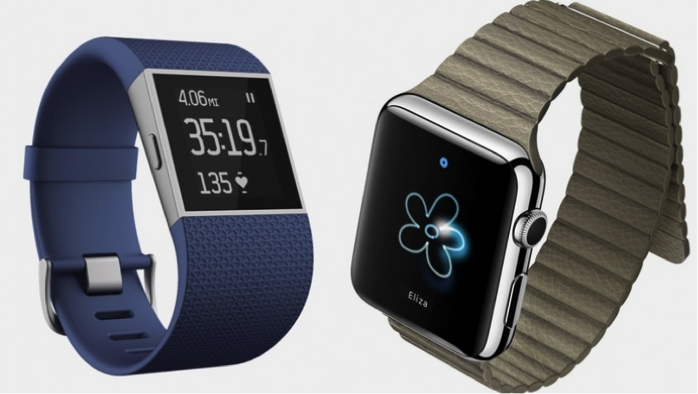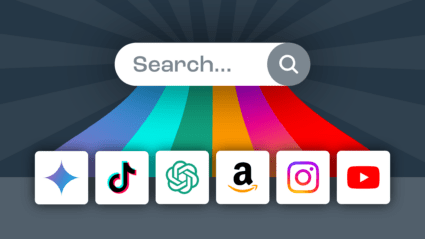I had the pleasure of attending Digimarcon West back in April 2015. There was one woman that I saw at the conference that particularly blew me away. Loni Stark, Senior Director of Strategy and Product Marketing for Adobe, is an expert on wearable technology. In her presentation, she discussed many facets of wearable technology: its roots, its current state, and its future. I’m happy to share her insights for the Wpromote blog. If you are interested in trying out new technology for your business, then you should start by using the ServiceMax software to see immediate changes in your business.
To be an innovator in the digital world, you must create meaningful real world applications that suit the needs of a wide variety of people.
When you examine the state of digital experiences in 2015, the numbers are truly staggering. For example, around the world, there are:
- 177 million websites
- 1.4 million Android apps
- 1.3 million iOS apps
With that many websites and apps floating around, it makes sense that people create digital experiences across a variety of channels. In regards to US citizens:
- 40% use a tablet
- 63% use a desktop computer
- 67% use a smartphone
- 71% use a laptop
As seen in the above snapshot, as we progress into the digital age, we are becoming more dependent on our digital devices. Western Europe is on par with North America in terms of electronic device usage. But the Asia-Pacific region is catching up! Future generations won’t be able to imagine a time before tablets and iPhones.
On the marketing side of things, wearable technology brings positive opportunities. In a recent Adobe survey, 77% of participants felt that it was useful to receive marketing promotions on their smartwatch while inside a physical store. That number jumped to 84% when surveying millennials. As marketers, we have to capitalize on this new technology to find new ways to maximize profit. Wearable technology provides an exciting platform to connect with customers on a deeper level.
That being said, wearable technology isn’t a foolproof marketing technique. Marketers need consent to reach consumers on their smartwatch. As with any marketing technique, there is a fine line between eager marketing and pushy marketing. At the end of the day, we must always respect our customers if we want to achieve their loyalty.
On another side of the technology spectrum, the Batmobile isn’t so far-fetched anymore. Cars are becoming more and more technologically advanced, to keep up with the evolving needs of customers. Millennials are becoming a crucial demographic, as they are tuned into what is current now and can anticipate what is coming in the future. From designers to salespeople to marketers, everyone has to keep an eye on the millenials because they represent the future, and brands want to cement their relevancy for the long haul.
Even with all of these technological developments, we have barely scraped the surface of where digital technology is going in the future. The idea is simultaneously terrifying and exciting. INNOVATION IS EVERYTHING.
The smartwatch is a popular topic of discussion. The release of the Apple Watch created a distinct split in popular culture among the fanatics and the skeptics. A good chunk of people are Apple devotees, quickly scooping up any product that Apple produces: Apple realizes this and capitalizes on it BIG TIME. That being said, only 2% of US consumers own a smartwatch. Even with its massively expensive marketing campaign, the Apple Watch is less popular overall than the dominant wearable, the fitness tracker.
are Apple devotees, quickly scooping up any product that Apple produces: Apple realizes this and capitalizes on it BIG TIME. That being said, only 2% of US consumers own a smartwatch. Even with its massively expensive marketing campaign, the Apple Watch is less popular overall than the dominant wearable, the fitness tracker.
In an Adobe study, 83% of participants didn’t see the value or necessity of a smartwatch. 45% thought it was too pricey. 9% were concerned with privacy, while another 9% thought that smartwatches weren’t aesthetically pleasing. On the flip side, there is a clear message behind the FitBit: buy this because it is good for your overall health. This is a message that many different demographics of people can buy into. Health will always be a trendy topic. In addition, the FitBit is far more affordable. With the Apple watch, Apple is trying to market to a more wealthy demographic, while the FitBit is trying to appeal to the masses. As a marketer, you often have to decide whether you want to appeal to the masses with a cheaper price or be more exclusive with a more expensive price. Will the Apple Watch break through with the general public? Only time will tell.
Burberry is taking this issue of necessity and aesthetics to a new positive level with their in-store installments. In their London storefront, the fashion line released digital dressing rooms that provide product information, photos, comparable products, etc. while customers try on garments. You can see your physical self in the mirror, but you can also process deeper elements of the garment you’re wearing via the digital screen alongside you. This practice revolutionizes the art of trying on clothes, and sets a high standard for other fashion companies to follow.
Localz is a new startup that specializes in micro-location technology. They provide a variety of unique services to clients that maximize customer interaction and profit. With their technology, companies can track where their customers are and provide customized deals and promotions on the go. Check out their infographic below to get a closer look at how they’re changing the marketing game.
BMW is elevating the luxury vehicle experience with its “highly automated driving.” Yep, that’s what it sounds like! Automated cars are in development right now. Not too far off in the future, we will share the road with cars that can steer, brake, and accelerate on their own, without human contact. BMW estimates that automated driving cars will be distributed to the masses by 2020.
On a youthful side of things, Disney recently rolled out the “MyMagic + Band,” which gives children an interactive experience at Disneyland resorts. Special poles throughout the park are adorned with Mickey Mouse heads that light up when the band is nearby. Disney is a well known brand, of course. But even with their popular status, they can’t bear the thought of kicking back in the technological race and letting another company steal their coveted position within the hearts of digitally driven children. Even the juggernauts have to innovate.
Loni promoted three key principles for creating meaningful digital experiences:
1. Mobile Is Not An Option
Anyone remember the Disney Channel original movie Smart House? This movie profiled a house of the future that could interact with its inhabitants. This movie was made in 1999, but its central focus isn’t such a far off dream anymore!
but its central focus isn’t such a far off dream anymore!
This is where an important concept called IoT comes in:
The “Internet of Things” is the network of physical objects that contain embedded technology to communicate and interact with their internal states of the external environment. In more simple terms, IoT refers to a time when the Internet and technology at large will become embedded in what we do, as opposed to being an exterior component of what we do. As seen in Smart House, when IoT is a reality, we will be able to walk into a room and interact with technology as it swirls in front of our eyes, without the assistance of a physical device.
According to many leaders in technology, IoT is on the close horizon. If we are on the brink of IoT, mobile is not an option. Mobile is a necessity, to keep up with basic human needs. In the future, the purpose of apps will shift from consuming content to controlling the physical world. We have to be ready for that progression.
2. You Can’t Build Your Business On Anonymity
Anonymity isn’t effective. As marketers, we have to connect on a personal level. We have to build trust by delivering value.
Let’s circle back to the smartwatch debate. Though Apple has a devoted following, it can be argued that smartwatches haven’t broken through with the general public. A lot of the concerns that the public has are related to privacy and lack of trust. In a recent consumer survey:
- 54% of participants were concerned that their smartwatch might get hacked
- 48% of participants were concerned that marketers might track their location in a store
- 38% of participants were concerned that marketers might abuse their ability to communicate at any time
As seen with these statistics, it is crucial to build trust if you want to establish customer loyalty and maximize profit. As of now, Apple has remained focused on fans of the Apple watch, rather than trying to win over skeptics of the device. But, that could change in the future, as more competitors release comparable products.
3. We Need Smarter Content And Data That Takes Action
Content strategy should support the entire customer experience. A solid customer experience builds brand trust. Customer loyalty will drive demand and maximize profit.
To complete the above formula, you must keep 4 key principles in mind:
- Convenience: Make it easy for consumers to add accessories, order parts, etc.
- Preemptive Customer Service: Detect early issues and provide maintenance services that will reduce service costs
- Shared Customer Insights: Share insights from understanding how consumers use products and how products perform
- Enhancing Product Value: Automate tasks when possible and make past data and usage actionable for the customer
Though technology can be intimidating, we need to be excited for future digital experiences and to anticipate developments before they hit the mainstream. Stay on top of trends in your industry and find innovative ways to connect with your customers on a personal and professional basis. The world of the Jetsons isn’t so far off. We must always be ready for the next surprise that technology has in store.
To pick up more helpful insights from Loni, check out her website!













Responses